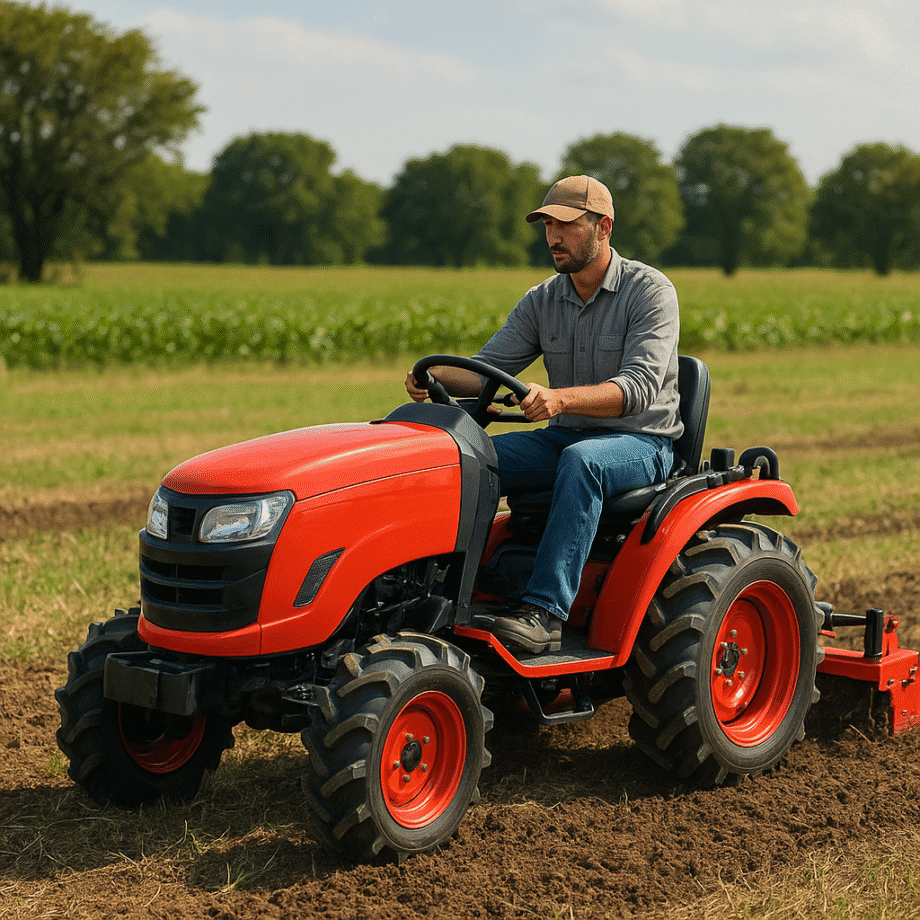Selecting the right agricultural machinery can transform productivity on a small farm. Compact tractors offer a blend of power, versatility, and efficiency designed to handle tasks from tilling and hauling to mowing and snow removal. This guide explores the essential features, top models, maintenance strategies, and emerging trends that every small-scale farmer should consider when investing in a compact tractor.
Understanding Modern Compact Tractors
Definition and Purpose
Compact tractors are smaller, lighter machines typically ranging from 15 to 50 horsepower. They bridge the gap between heavy-duty tractors and garden tractors, offering enough strength for demanding jobs while maintaining tight turning circles for confined spaces. Farmers value these machines for their ability to adapt to a variety of implements, making them a cost-effectiveness cornerstone in diversified operations.
Core Components
At the heart of every compact tractor is the diesel engine, which supplies torque for attachments like loaders, backhoes, and rotary cutters. A responsive transmission—whether hydrostatic or gear-driven—enables precise speed control, while the three-point hitch system ensures compatibility with an array of implements. Hydraulic systems deliver the lifting and steering power necessary for front-end loaders and other hydraulic tools, boosting reliability in daily farm chores.
Essential Features to Look For
Maneuverability and Size
For small-scale plots and tight zones, a compact tractor’s footprint matters. Look for models with a narrow stance, short wheelbase, and four-wheel drive capability. These factors enhance maneuverability in orchards, vineyards, and market gardens, allowing access between rows without damaging crops.
Power and Performance
Engine rating and hydraulic flow determine how well a tractor handles implements. Higher horsepower engines support heavier attachments, while robust hydraulic pumps ensure swift loader cycles and smooth backhoe operation. Seek units with a minimum of 20 HP if you plan to run mid-size implements; for intensive loader work, 35–50 HP is ideal.
Comfort and Ergonomics
Long hours in the field call for comfortable seating, intuitive controls, and ROPS (Roll-Over Protective Structures). A user-friendly dashboard with clear gauges, adjustable suspension seats, and straightforward joystick controls can reduce operator fatigue. Enhanced visibility from a well-designed cab or open operator station is equally critical for safe, precise work.
Top Models for Small-Scale Farmers
- John Deere 1025R
- 24.2 HP diesel engine
- Hydrostatic transmission
- Factory-integrated front loader
- Optional mid-mount mower deck
- Kubota BX23S
- 23.3 HP diesel engine
- Two-range HST transmission
- Sub-compact chassis for tight spaces
- Backhoe and loader attachments
- Mahindra eMax 25S
- 24.8 HP diesel engine
- Premium front loader included
- High-capacity hydraulics
- Operator platform with tilt steering
- New Holland Boomer 24
- 24 HP engine
- Compact design for precision work
- Optional cab with heating
- Easy-to-use loader joystick
Each of these models combines durability with user-friendly features. Selecting the right tractor depends on your soil type, acreage, and the implements you plan to use most frequently.
Maintenance and Operational Tips
Routine Service Schedule
Consistent maintenance keeps a tractor running smoothly and extends its lifespan. Establish a schedule for oil changes, air and fuel filter replacements, and hydraulic fluid checks. Inspect hoses and fittings monthly to catch leaks early, and grease all lubrication points every 50 hours of operation.
Proper Storage and Winterization
Protect your investment by storing the tractor under cover. In colder climates, drain or treat coolant to prevent freezing, and add a fuel stabilizer to avoid clogged injectors. Remove battery leads or use a trickle charger to maintain voltage during idle periods.
Efficient Operation Practices
Match tractor speed and gear selection to the task. Operating at too low an RPM can strain the engine, while excessive speed may damage implements or compromise safety. Familiarize yourself with the tractor’s load-sensing hydraulics and PTO speeds to optimize performance and fuel consumption.
Future Innovations in Compact Tractors
Electrification and Hybrid Models
As battery technology advances, manufacturers are introducing electric and hybrid compact tractors. These zero-emission machines promise sustainability for eco-conscious operations, reduced fuel costs, and quieter operation—ideal for urban or suburban farms.
Precision Agriculture Technologies
GPS-guided steering, telematics, and drone integration are making their way into compact platforms. Automated guidance systems can reduce overlaps and gaps during fieldwork, boosting overall accuracy and crop yields. Remote diagnostics and software updates help maintain peak machine health with minimal downtime.
Enhanced Attachment Ecosystems
Future tractors will likely offer more tool-free attachment systems and smart implements that communicate with the base unit. This synergy enhances innovation in tasks like variable-rate spraying, targeted soil sampling, and on-the-fly implement adjustments, elevating small-farm productivity to new heights.
